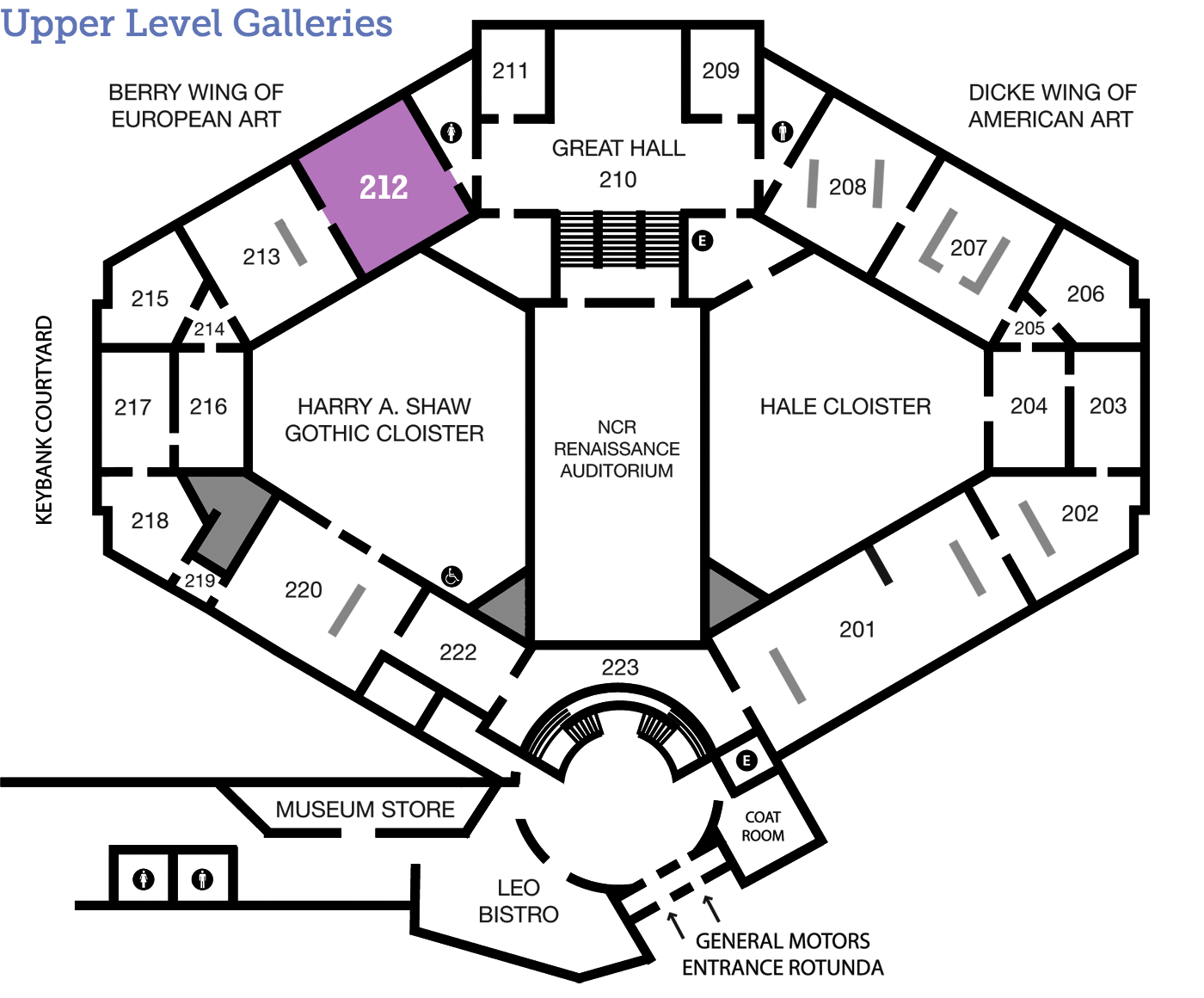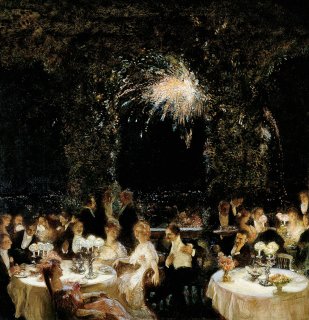
Gaston La Touche
Dinner at the Casino
(1854–1913)
French c. 1906 Oil on canvas 39 X 37 ⅝ inches Gift of Mr. and Mrs. Robert Schermer 1975.33
Snap, Crackle, Pop
A crackle of fireworks punctuates the laughter and chatter of a dreamy dinner. Join the party and mingle a while in Gaston La Touche’s nighttime reverie.
A Day in the Life
Tools and Techniques
Behind the Scenes
Look Closer
Party Time
Dinner at the Casino includes many things we associate with a festive occasion: fancy clothes, a special setting, atmospheric light, and an overall celebratory mood. Take a closer look at how the light brushwork and blending of colors evoke these associations in the detailed shots below. Imagine what sounds or smells you would experience if you were there.

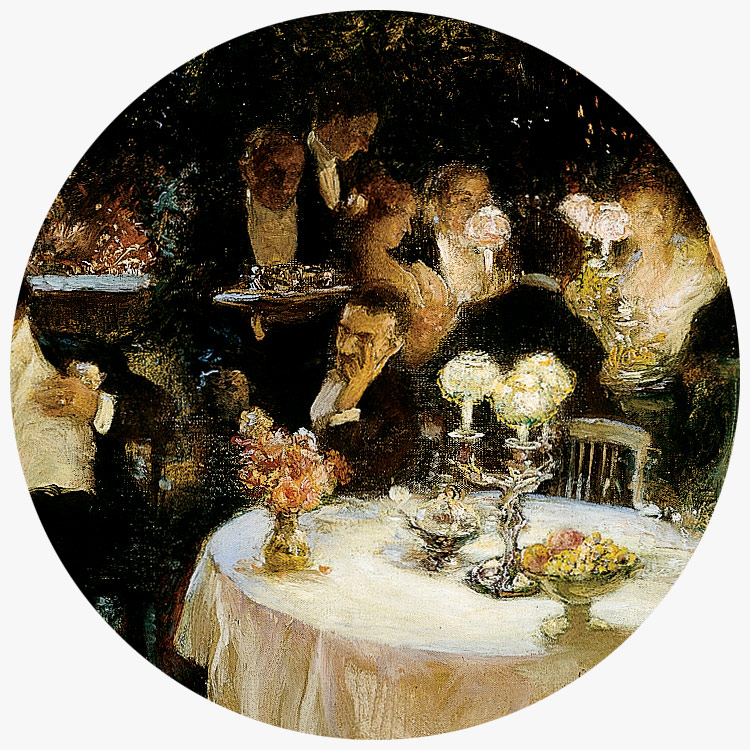
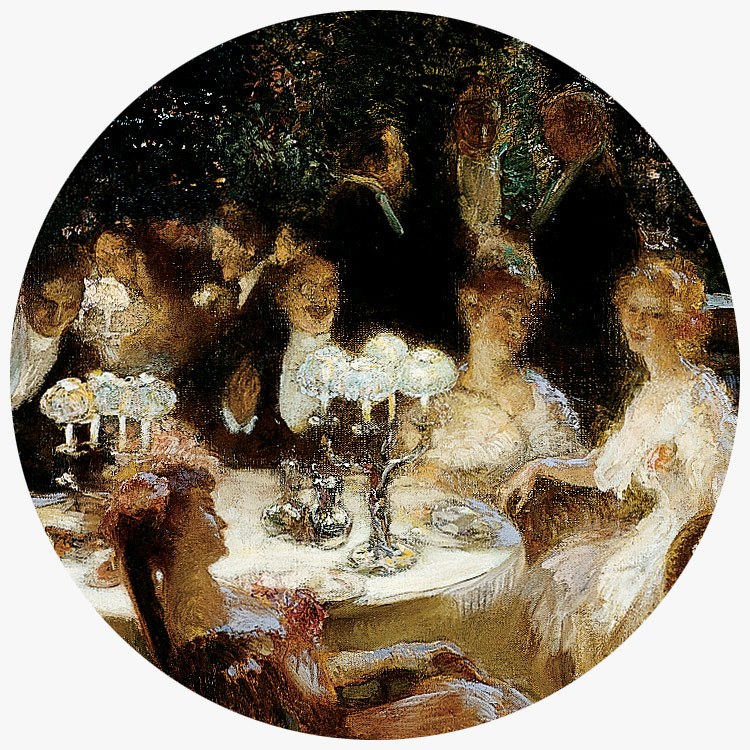
Just for Kids
Imagine!
Think about a fancy party you have attended. What were you celebrating? Was it someone’s birthday? Maybe it was a wedding with a big dinner afterwards. During what kind of celebration do you see fireworks? Carefully look at this painting. What do you think the people are celebrating?
Imagine what type of music or songs would be playing in the scene? Create a soundtrack for Dinner at the Casino. If you can, listen to songs or try humming. Look at the painting again. Does adding music change the way you view the painting?
Signs & Symbols
Dig Deeper
Arts Intersected
A Beautiful Age
The glamorous setting and well-dressed dinner guests in this painting capture something of the spirit of La Belle Epoque, or The Beautiful Age, a phrase that describes France during the time between the 1870s and 1914. It was a period of relative peace, economic prosperity, technological innovation, and intense creativity in the arts. However, this beautiful image would be shattered in 1914 with the beginning of WWI.
A similar optimistic attitude was felt in other countries, such as England and the United States, although this was usually restricted to the upper classes, and it is still a popular topic in film and television, ranging from Titanic to Downton Abbey. Below is a still from the film Titanic. Compare it with Dinner at the Casino and look for similarities between the two, but also consider if the different mediums—paint and film—make you appreciate certain details differently.
Poll
What do you find most similar to Dinner at the Casino?
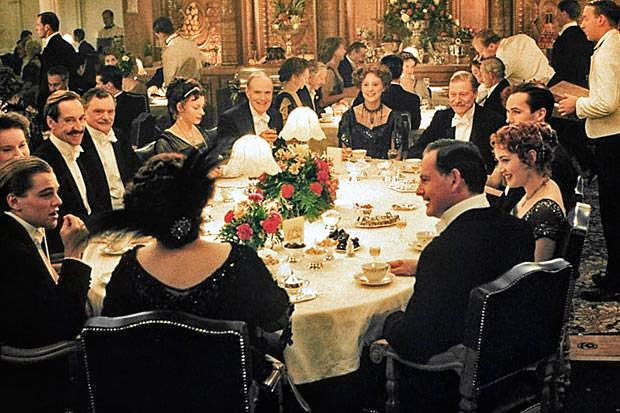
1997, Twentieth Century Fox Film Corporation, Paramount Pictures, Lightstorm Entertainment
The Sculpture Speaks
Did You Know?
Expert Opinion
Impressed by Impressionism
What feature of this painting shows the influence of Impressionism on Gaston La Touche? How do his use of color and brushwork contribute to the atmospheric quality in Dinner at the Casino? Find out more from Dominique Vasseur, former Senior Curator at The DAI from 1979–1999, in the following audio clip.
Transcript:
Like most of the artists of the nineteenth century, La Touche came from an Academic background; that is to say, he was trained in an art school to paint highly realistically. This work, however, shows the definite influence of the Impressionists upon La Touche’s work. One thing that Impressionism brought to late nineteenth-century art was a technical aspect, which was the broken brush stroke. And here La Touche is aware of that, in that he uses his brush and the application of oil in a loose and somewhat unstructured manner when it suits his needs.
The aspect of La Touche’s talent that was remarked on repeatedly during his career was what a great colorist he was. Now, it's interesting here because the range of colors is quite restrained. But, of course, when you look at the work close up you see an amazing range of pinks and blues and greens—these almost sort of iridescent, shining oyster-shell colors that really La Touche uses in a very, very subtle manner in order to evoke this wonderfully soft lovely evening on an outdoor terrace. If he had spent more attention or detail or focus, or placed more color on the trellis, you would lose that wonderful dynamic of what these people are doing and saying. La Touche realizes that the background is really inconsequential. But at the same time, he's smart enough to put that one wonderful fireworks burst in the center of the trellis, which is enough to catch our attention for just a brief moment, just like a burst of fireworks would.
Look Around
About the Artist
Burned Out
Early in his career La Touche painted realistic domestic scenes with somber colors, but around 1890 he decided to change his style, switching to a preference for lighter colors and looser brush strokes (see “Expert Opinion”). In an effort to break with his past he burned most of his previous work in 1891.
Further reading: Jane Abdy, “Gaston La Touche,” The Dictionary of Art, edited by Jane Turner, volume 18 (New York: Macmillan, 1996), 835–836.
Talk Back
Preserved in Paint
Today, people often take pictures at special events, such as weddings and parties, in order to preserve a memory of the unique occasion. Imagine if Dinner at the Casino were a photo. How might this change the way you respond to what is depicted? Are there particular details, moods, or feelings that are unique to the painting and might not appear in a photo?

